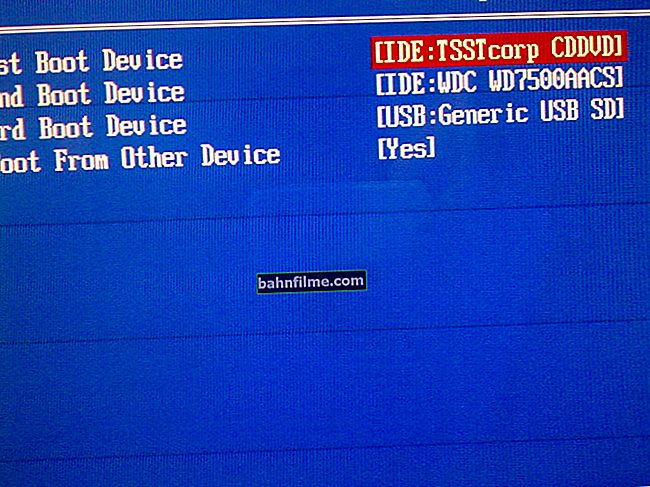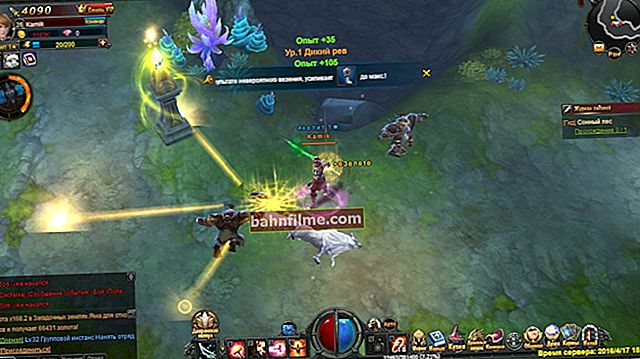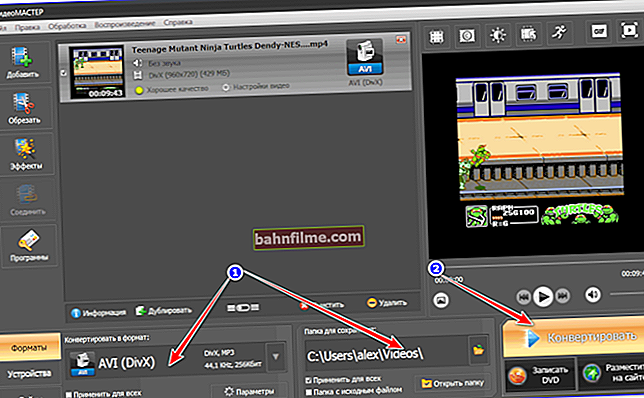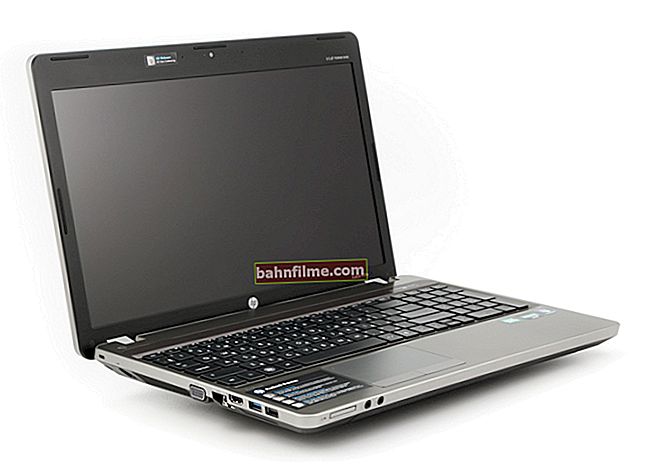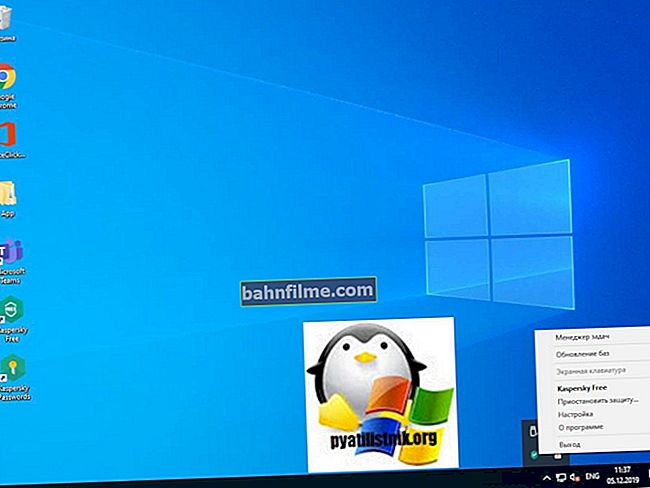
User question
Hello.
Tell me what you can do if an error starts to appear in the taskbar about insufficient space on the "C: \" drive (it ends). On the advice of friends, I tried to clean the system of garbage - about 100-200 MB were removed, but this did not solve the problem ...
PS: I have Windows 7, Acer Aspire 5500 laptop
Good day!
There is never a lot of free space - sooner or later, it ends ... 👌
And all would be fine, but if this happens on the system disk (on which Windows is installed), then an error will appear stating that there is not enough free space on the disk (example in the screenshot below), it will be impossible to download some files from the Internet, the system will often hang and slow down.
In this article I will give several options for solving the problem. So...

Not enough disk space // example of an error
*
How to free up disk space ("C: \")
Solution number 1: analyze the occupied space and delete (transfer) unnecessary files
The first thing I recommend to start with is analyzing the occupied disk space (moreover, it does not matter which disk we are talking about: system or not). This can be done as "manually", simply by going through the folders and viewing the files, or you can - with the help of special utilities. One of which I recommend is Scanner.
Note : it just often happens that the place ends up due to the work or carelessness of the user himself.
For example, several times when solving a similar problem, I came across the fact that users installed the Fraps program (and by default it is installed on the "C: \" drive), recorded an hour-long game video, and then said that "the space has run out ... What to do ? ".
♦
Scanner
Developer site: //www.steffengerlach.de/freeware/

Search for large files on disk - analysis of occupied space
A simple but extremely handy utility. Designed to analyze the occupied disk space.
By the way, the process of evaluating a disk is quite fast (several times faster than that of its analogues!). At the output, get a diagram, hovering the mouse over the individual parts of which, get the name of the files and folders that "chopped off" this place. The utility does not need to be installed (another plus)!
♦
After starting Scanner, select which drive to scan (in my example above, it scanned the "C: \" drive). Actually, then you will have to assess the degree of need for certain files, transfer something, delete something.
👉 To help!

By the way, if some files will not be deleted, I recommend using the tips from this article.
Note: I do not recommend touching system folders and files (Windows, Program Files (x86), Program Files, Users, etc.).
*
Solution number 2: clean the disk from "garbage"
Perhaps, only the lazy one does not speak about this ...
Over time, a fairly large number of "junk" files can accumulate on the Windows system disk: files and folders from long-deleted programs, old and erroneous entries in the registry, shortcuts, browser cache, etc. You don't need all this "goodness", but it all takes up a lot of space on the drive.
👉 How do I clean up my disk?
Option number 1
The best option, in my opinion, is to use a special utility for cleaning your PC (and then regularly use it). One of the best for novice users (in my opinion) is 👉Advanced SystemCare.
It will help to remove garbage, set optimal Windows security settings, clear browsers from all adware modules, speed up your computer.

6 GB of junk files !!!

Acceleration Tab - SystemCare
♦
Option number 2
You can use the built-in Windows cleaner, however, its work leaves much to be desired. Something he, of course, will find, but in comparison with the special. utilities for cleaning - it will be crumbs ...
For comparison, the Windows cleaner found and deleted about 200 MB of "garbage", and after it the Advanced SystemCare utility - found about 6 GB (see screen above).
To start the cleaner - open "My Computer", and then properties desired disk (example in the screenshot below).

Open disk properties
In the tab "General" (opens by default), click the button "Disk Cleanup" .

Disk cleanup
Then follow the instructions of the wizard. In general, there is nothing complicated here ...
*
Solution # 3: remove unused programs
I noticed for a long time that many users never look at the list of installed programs (and, accordingly, never uninstall).
Over time, the list of programs grows, the space they occupy on the disk also grows (I'm not talking about the fact that some of them do not write themselves to autoload and affect Windows boot time and its performance).
To see a list of installed programs, just open 👉 the control panel at:
Control Panel \ Programs \ Programs and Features
By the way, you can also open the control panel using a combination of buttons WIN + Rby entering the commandappwiz.cpl and hitting Enter.

Programs and Features - Windows 7
In general, there is little left to do: sort the list of programs by name (or date, as you like), and delete everything that you have not used for a long time. Some users manage to free tens of gigabytes!
👉 Important!
By the way, pay attention in the list of programs for games - it's just that some users install them on the system disk, even if they have a separate partition for this case ... (and they take up a lot of space)
👉 To help!

If you do not remove any software, use a special utility to remove other programs
*
Solution # 4: deal with backups, swap file, hibernation
The fact is that these functions of the system for their work create separate files on the system disk, which take up several GB! When there is not enough space, some functions can be turned off, while others can be limited in "appetites" ...
Backups
By default, they are enabled (except for some versions of Windows 10) and can take up quite a lot of disk space. Therefore, I recommend limiting their maximum disk space usage.
To do this, open the control panel, section "System and Security / System" .

Open the system section
Next tab "System protection" (example below).

System protection
Then you need to select the disk (see which one is labeled as "System"), and press the button "Tune" .

Select disk and configure
Then you specify how much to use the disk space under protection, or disable it altogether (I do not recommend disabling it, it is better to limit it).

How much to use disk space under protection
Paging file
The paging file is a seemingly regular file on disk with the namepagefile.sys... It is set, as a rule, by the system by default automatically, depending on the size of your RAM. In some cases, it is recommended to move it to another partition, or reduce the space it occupies.
To configure it: you must first open, as in the previous step, the tab "System" (note: you can also open this tab in "My Computer": right-click anywhere, and select "Properties" from the context menu).
Next in the menu on the left, open the link "Advanced system parameters".

Additional system parameters
Then in the "Advanced" tab open parameters performance. Then press the button "Change" to edit virtual memory parameters (see the screen below with arrows and numbers in order).

Configuring virtual memory
Next, select the disk and set the size of the virtual memory. In general, that's all on this issue.
Optimal size of virtual memory (paging file):
2 GB of RAM - 3548 MB;
4 GB of RAM - 3024 MB;
8 GB of RAM - 2016 MB;
16 GB of RAM (or more) - you can work without a paging file.

Virtual memory
File for hibernation to work
For the possibility of "hibernation" (turning off the PC so that it can be quickly "woken up" and continue its work), a special file is created on the disk - hiberfil.sys .
Its size is equal to the size of the RAM, in fact, all of its contents are stored in it. So, if you do not use this mode, then you do not need the file either, which means this thing can be disabled.
👉 Help!
How to open a command prompt on different Windows
To disable and delete a file hiberfil.sys - open a command prompt (note: press Win + R, enter the CMD command and press Enter), and enter the command powercfg -h off (i.e. disable hibernation, see screenshot below).

*
Solution # 5: expand free space on one disk at the expense of free space on another
Quite a typical situation: the hard disk is divided into two partitions - the "C: \" drive with Windows, and the "D: \" drive for the user's files and folders. And, as a rule, the system disk in this case is made as small as possible.
In some cases, it ceases to be enough immediately, as soon as you install the necessary software. As a solution, you can offer to expand the free space on it if you have free space on another disk partition, for example, on "D: \".
This procedure is fast enough and without data loss! The link to the instruction is given below.
👉 To help!

How to increase the capacity of the C drive at the expense of the D drive without data loss.
*
On this I round off. Good luck to everyone and more space!
Additions on the topic are welcome ...
👣
First publication: 28.08.2017
Correction: 01/30/2020
